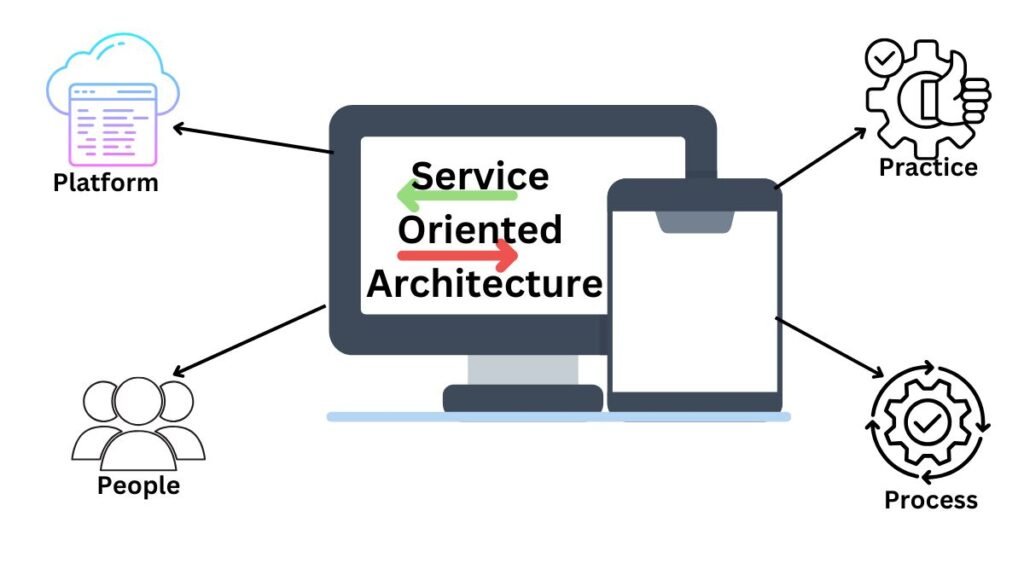Contents
Introduction To Service Oriented Architecture
The application developer no longer has to worry about rewriting or duplicating preexisting functions or figuring out how to integrate or make existing functions interoperable with to SOA.
Every service in a Service Oriented Architecture (SOA) contains the data and code needed to perform a specific, full-fledged business function (e.g., processing a mortgage application, calculating a monthly loan payment, or checking a customer’s credit). The loose coupling is provided by the service interfaces. This lessens the dependencies between apps because they may be called with little to no understanding of the underlying implementation of the service.
A service contract between the service provider and the service user is represented by this interface. Java, Microsoft.Net, Cobol, or any other programming language can be used to create the programs that power the service interface. They can also be purchased as open source software, packaged software from a vendor (like SAP), or software as a service (like Salesforce CRM).
Web service definition language (WSDL), a standard tag structure based on extensible markup language (XML), is commonly used to design service interfaces.
Standard network protocols like Restful HTTP (JSON/HTTP) or Simple Object Access Protocol (SOAP)/HTTP are used to expose the services and send requests to read or modify data. The development lifecycle is managed by service governance, which also ensures that services are published in a registry at the right time so that developers can easily locate and reuse them when building new applications or business processes.
Although these services can be developed from the ground up, they are frequently made by opening up functionalities from old systems of record as service interfaces.
In this sense, SOA marks a significant turning point in the development and integration of applications throughout the past two decades. Prior to SOA’s emergence in the late 1990s, developers had to completely or partially recreate sophisticated point-to-point integration for every new development project in order to link an application to data or functions stored in another system. The developer was able to connect using the SOA ESB architecture and leverage the current capabilities by exposing those functions through SOA services.
Despite having several terminology in common (such as “service” and “architecture”), SOA and the more contemporary microservices architecture are very loosely connected and, as this article will explain later, function at separate scopes.
Service Oriented Architecture diagram

What Is Service Oriented Architecture?
Software components may be made interoperable and reusable by using service interfaces, as described by service-oriented architecture(SOA). Services may be quickly integrated into new applications by using an architectural pattern and common interface standards.
What is an ESB?
An architecture pattern known as an Enterprise Service Bus (ESB) allows a centralized software component to handle application interactions. Data models are transformed, connection and messages are managed, routing is carried out, communication protocols are converted, and maybe the composition of numerous requests is managed.
These transformations and integrations can be made accessible as a service interface by the ESB so that future apps can utilize them. Typically, a custom created integration runtime and toolset are used to implement the ESB paradigm, ensuring optimal productivity.
Implementing a SOA without an ESB is feasible, but doing so would be the same as having a collection of services. To comply with each service interface, each application owner would have to establish a direct connection to any services they require and carry out the required data conversions.
Even if the interfaces are reusable, this is a lot of effort, and since each connection is point-to-point, it will be difficult to maintain in the future. In the end, ESBs were seen as such a de facto component of every SOA installation that neither of these phrases are occasionally used interchangeably, which leads to misunderstandings.
How Does Service Oriented Architecture Work
SOA breaks down complicated software systems into reusable services that other apps and users known as service consumers can access. New apps may be built using these services as building pieces. Every SOA service has a distinct function and an interface that contains the communication protocol needed to access it, along with the input and output parameters of the service.
Through a loose coupling framework, SOA enables services to coordinate an action or pass data. The term “loose coupling” describes a client of a service continuing to function independently of the service it needs. Furthermore, even if two services are unrelated, the customer, who may also be a service, can communicate with them. This procedure enables the combination of different services to produce more sophisticated software that may be utilized as a single unit by other applications.
To request information or a task from a service, a user or the owner of an application delivers input data. After processing the data or completing the task at hand, the service returns a response. An employee in marketing or sales, for instance, may submit a SOA service request from a CRM system, which grants access to client information. When an employee provides the service with pertinent information, such the name of a particular client, it will provide the required answer, which may include the person’s past purchases.
The service notion or service model of computing is implemented via SOA. Business operations and procedures are implemented as software services in this architectural approach. These services are tied into applications via dynamic service orchestration and accessed via a set of tightly defined application programming interfaces (APIs).

